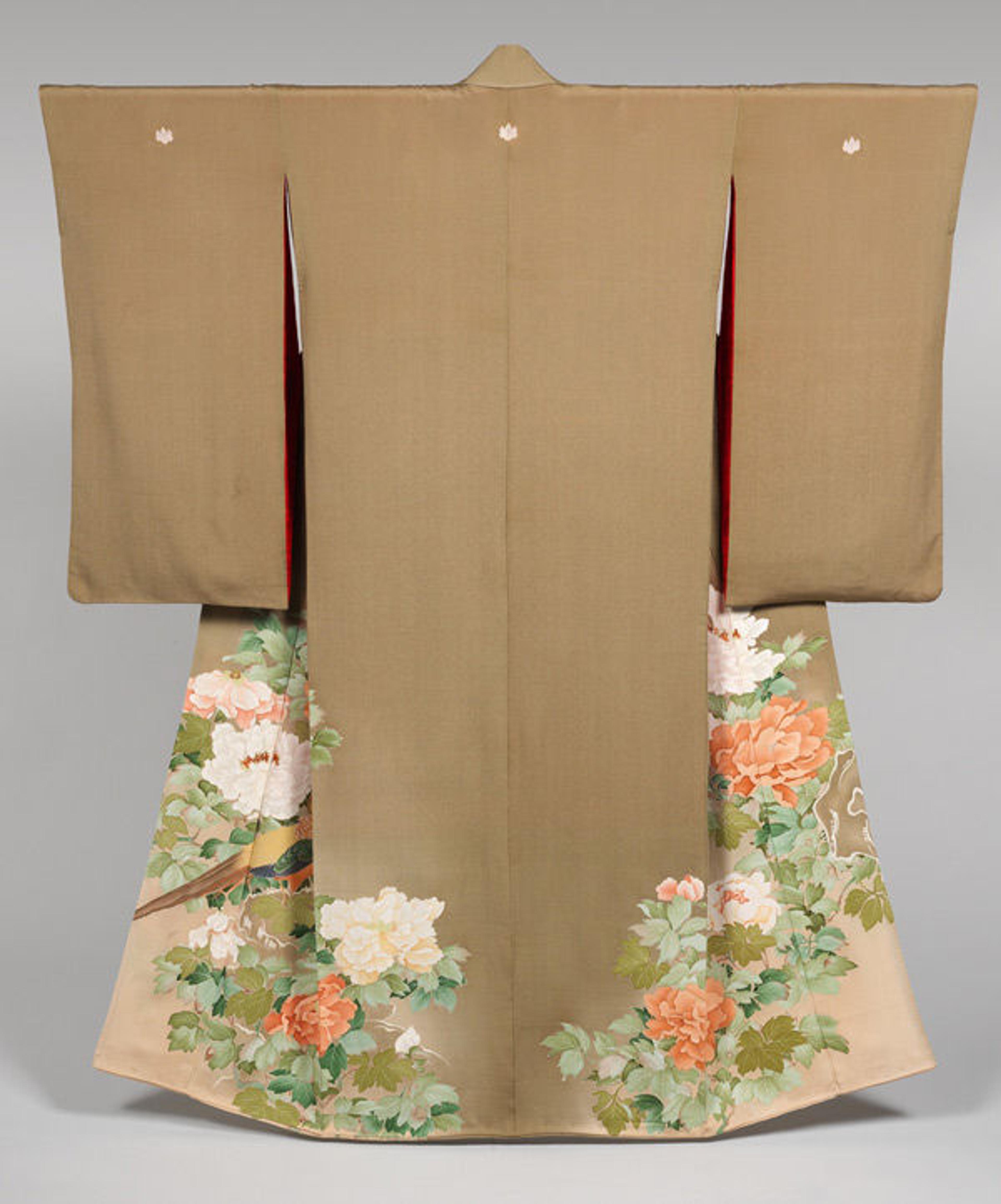Fashion Moving Forward

Kimono with pheasants amid peonies, first half of the 20th century. Meiji (1868–1912)–Shōwa period (1926–89). Japan. Paste-resist dyeing with silk embroidered accents on silk crepe. The Metropolitan Museum of Art, New York, Gift of Sue Cassidy Clark, in memory of Terry Satsuki Milhaupt, 2013 (2013.510.5)
«It's taken me years to admit, but I have an addiction to all things Japanese. At the impressionable age of five, my father showed me my first Godzilla movie; several King Ghidorah action figures, three hundred Pokémon cards, and fourteen Studio Ghibli films later, I've not only converted my calculus notebook into a journal in which I try to memorize Hiragana, Katakana, and Kanji, but I've come to terms with the extent of my obsession. As a result, it was practically inevitable that I found myself roaming through the Met's exhibition Kimono: A Modern History, on view through January 19, 2015. Featuring a range of kimonos from the eighteenth century to the present day, it fed right into my interests.»
Beyond my personal inclination toward Japanese culture, a large part of the exhibition's appeal came in looking at the extent to which personal definition through clothing has continued to be a key element in society. The kimonos are absolutely stunning, and are coupled with a richness that transcends their aesthetics and speaks volumes about their cultural importance. Those of the Shōwa period (1926–89) particularly had me awestruck, my favorite being adorned with peonies and boasting bold colors along with its striking design. That said, the consideration of the progression of the magnificent kimonos throughout the ages provokes more than just the overwhelming desire to rock every single piece in the collection; the exhibit transcends mere beauty, drawing attention to the role of the garment in definition of social class and, as the exhibit expounds upon, the progression of styles in response to shifts in availability, political conditions, and influences of other cultures.
Being able to witness the grand sweep of time therefore begs the question: How does what we wear still define us? Personal expression through clothing has been a consistent theme across centuries, and though what we wear no longer immediately denotes the social class conveyed through earlier kimonos, part of what we choose to wear is dictated by what we wish to convey to others about ourselves. In that sense, outfits serve as a short, intimate conversation. Those interactions seem highly apparent in the extent to which you can feel reactions to the kosode fashion of the Edo period through the dramatic forms captured in new applications, such as one of my favorite pieces, a beautiful shirt by Hanae Mori which plays on the same techniques as those employed in the making of kimonos, yet does so within a modern shirt. As a result, the exhibit is pleasing, thought-provoking, and a true treat; no preexisting obsessions required.
Sage undefined
Sage is a member of the Museum's Teen Advisory Group and was a participant in the 2013 3D Scanning and Printing Summer Intensive for teens aged 15 through 18.